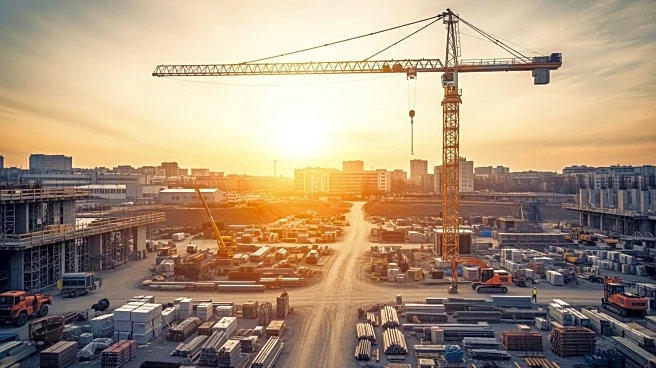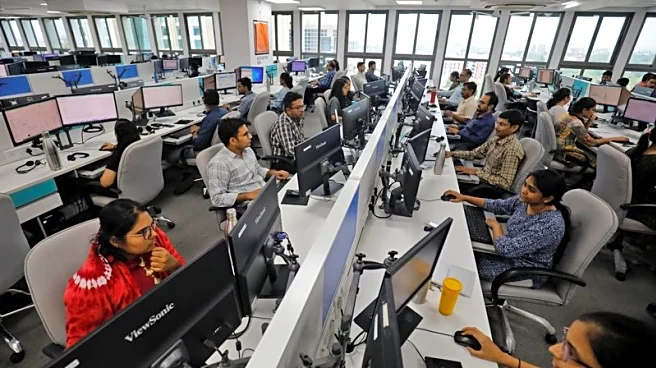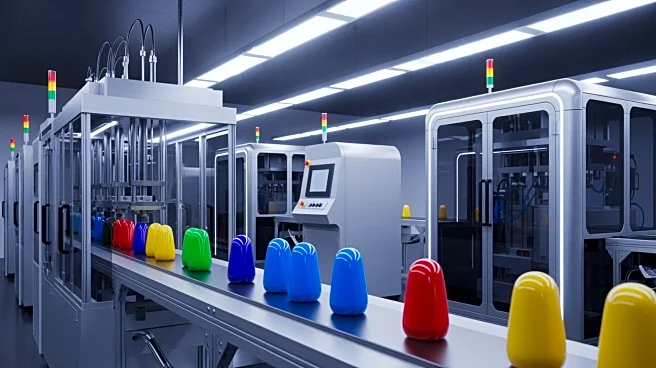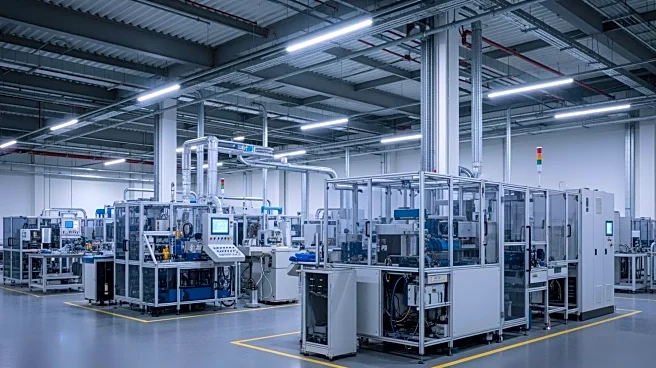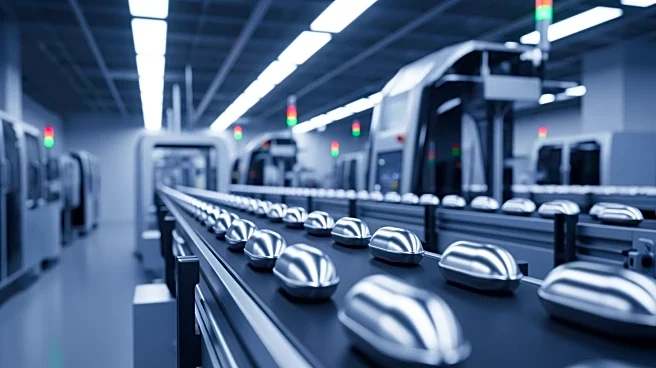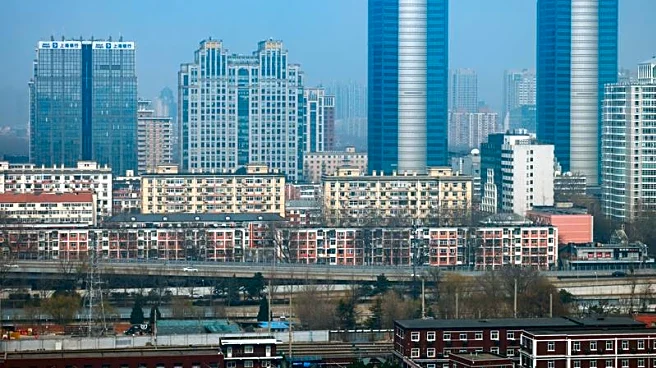What's Happening?
The commercial construction sector in the United States experienced a notable increase in activity during September 2025, with total construction starts rising by 3.1% to a seasonally adjusted annual rate
of $1.26 trillion, according to Dodge Construction Network. This growth builds on the previous month's 1.7% increase. Nonresidential building starts, which encompass commercial and institutional projects, surged by 11.9% in September. Specific sectors such as parking and service stations saw a 30.1% increase, while office construction rose by 32.6%. Manufacturing activity rebounded significantly, with a 45.2% increase following a 24.4% drop in the previous month. Despite these gains, broader acceleration in construction starts remains inconsistent, with chief economist Eric Gaus noting that a 3% growth rate merely keeps pace with inflation. For the year-to-date through September, nonresidential construction posted a 5% increase, with commercial groundbreakings growing by 10.9%. However, institutional starts, including education and healthcare, fell by 0.8%.
Why It's Important?
The growth in commercial construction is a critical indicator of economic health, reflecting increased investment and confidence in the sector. The rise in nonresidential building starts, particularly in office and manufacturing projects, suggests a potential rebound in business activities and industrial production. This could lead to job creation and economic stimulation, benefiting local economies and the construction industry. However, the inconsistency in growth rates and the decline in institutional starts highlight underlying challenges, such as inflationary pressures and sector-specific downturns. The mixed signals from the construction sector may influence future investment decisions and policy-making, as stakeholders assess the sustainability of current growth trends.
What's Next?
Looking ahead, the construction industry may face challenges in maintaining growth momentum, particularly in the face of inflation and economic uncertainties. Stakeholders, including developers and policymakers, will likely focus on strategies to sustain growth and address sector-specific issues, such as the decline in institutional starts. The industry may also see increased attention on infrastructure projects, given the recent decline in nonbuilding starts, including highways and bridges. As the year progresses, construction firms and investors will need to navigate these complexities to capitalize on growth opportunities while mitigating risks.
Beyond the Headlines
The fluctuations in construction activity underscore broader economic dynamics, including the impact of inflation and shifting investment priorities. The rebound in manufacturing construction may signal a shift towards domestic production and supply chain resilience, reflecting broader economic strategies. Additionally, the decline in institutional starts could prompt discussions on the allocation of resources towards education and healthcare infrastructure, highlighting potential gaps in public investment. These developments may influence long-term economic planning and policy decisions, as stakeholders seek to balance growth with sustainable development.
